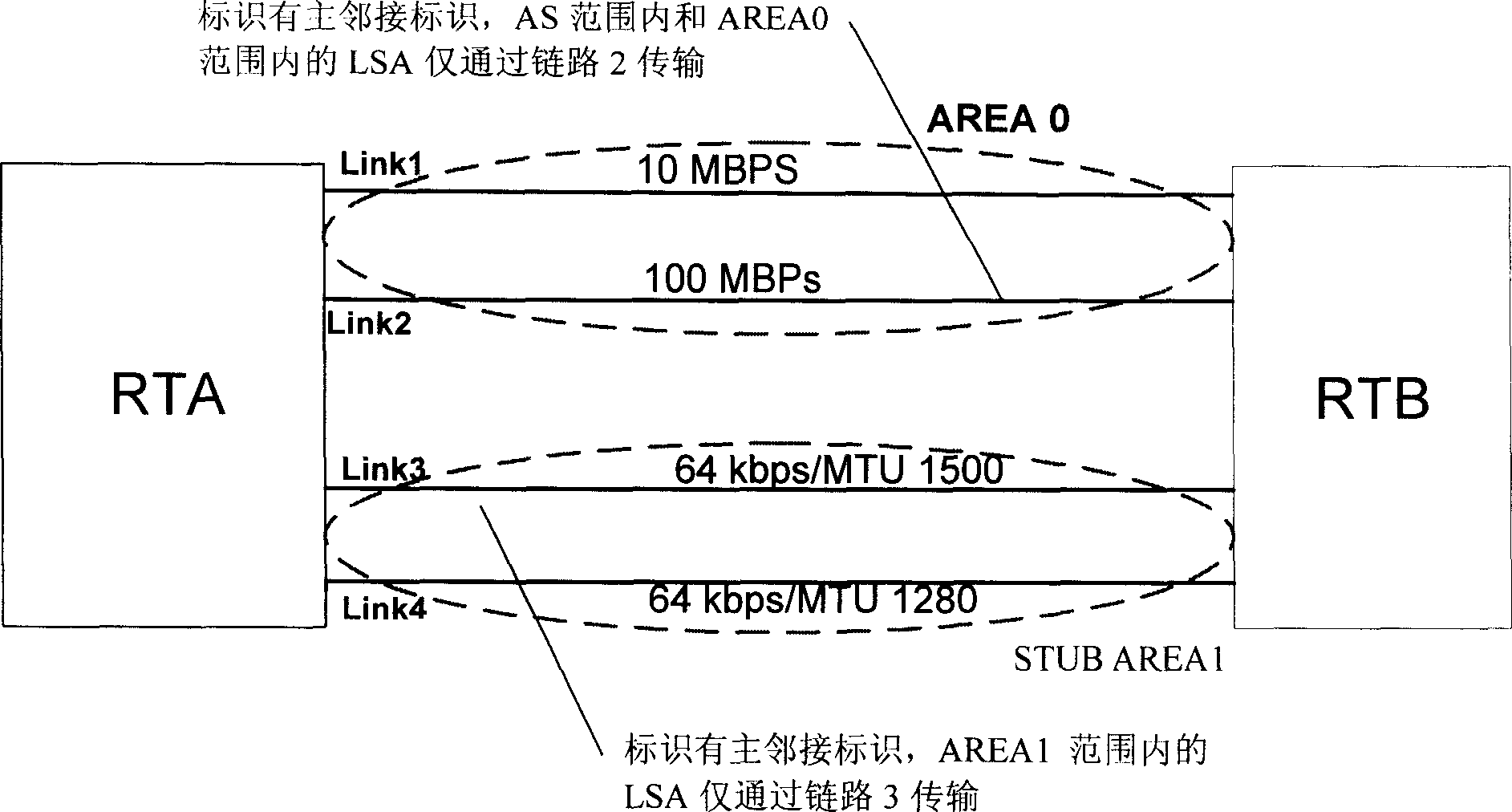Link station information transmission method based on multi-interface route equipment
A link state information and transmission method technology, which is applied in the field of link state information transmission based on multi-interface routing equipment, can solve problems such as network pressure on adjacent routers, achieve the effects of optimizing the flooding process, increasing the establishment speed, and avoiding occupation
- Summary
- Abstract
- Description
- Claims
- Application Information
AI Technical Summary
Problems solved by technology
Method used
Image
Examples
example 1
[0052] Example 1. The implementation process of forming the first adjacency relationship between routing device 1 and routing device 2.
[0053] In the process of forming the first adjacency relationship between routing device 1 and routing device 2, routing device 1 detects whether there is an established adjacency between it and routing device 2 after the first adjacency relationship being formed enters the 2WAY state Since the new adjacency is the first adjacency, routing device 1 determines that there is no established adjacency. In this way, routing device 1 sends a DD description packet carrying complete link state confirmation information to the routing equipment two.
[0054] After the first FULL adjacency relationship is formed between routing device 1 and routing device 2, the formation process of other new adjacency relationships is as described in Example 2 and Example 3 below.
[0055] For the convenience of description, the first adjacency that is being formed o...
example 2
[0056] Example 2. When routing device 1 and routing device 2 have a FULL adjacency relationship of the same neighbor in the same area, the implementation process of forming a secondary adjacency relationship between routing device 1 and routing device 2 is as follows:
[0057] In the process of forming a secondary adjacency relationship between routing device 1 and routing device 2, after the secondary adjacency relationship enters the 2WAY state, routing device 1 detects whether there is a FULL adjacency of the same neighbor and the same area between it and routing device 2 relation. Since the adjacency being formed is a secondary adjacency, that is, there is a FULL adjacency between routing device 1 and routing device 2, routing device 1 determines that there is a FULL adjacency in the same area, and thus routing device 1 will carry the The DD description message of the link state confirmation information within the link range where the adjacency relationship is being formed...
example 3
[0058] Example 3. When routing device 1 and routing device 2 have FULL adjacencies in different areas of the same neighbor, the implementation process of forming a secondary adjacency relationship between routing device 1 and routing device 2 is as follows:
[0059] In the process of forming a secondary adjacency relationship between routing device 1 and routing device 2, after the secondary adjacency relationship enters the 2WAY state, routing device 1 detects whether there is a FULL adjacency in a different area of the same neighbor with routing device 2 . Since the adjacency that is being formed is a secondary adjacency, that is, there is a FULL adjacency between routing device 1 and routing device 2, routing device 1 determines that there is a FULL adjacency in a different area of the same neighbor. In this way, routing device 1 Send the DD description message carrying the link state confirmation information within the area where the secondary adjacency relationship is...
PUM
 Login to View More
Login to View More Abstract
Description
Claims
Application Information
 Login to View More
Login to View More - R&D
- Intellectual Property
- Life Sciences
- Materials
- Tech Scout
- Unparalleled Data Quality
- Higher Quality Content
- 60% Fewer Hallucinations
Browse by: Latest US Patents, China's latest patents, Technical Efficacy Thesaurus, Application Domain, Technology Topic, Popular Technical Reports.
© 2025 PatSnap. All rights reserved.Legal|Privacy policy|Modern Slavery Act Transparency Statement|Sitemap|About US| Contact US: help@patsnap.com

